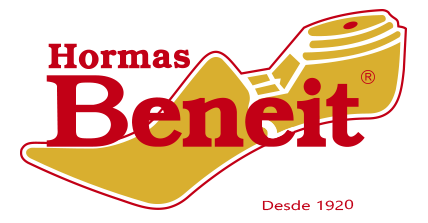Because each attempt at the equation builds on previous solutions, any new solution essentially verifies previous work. While PoS is more energy-efficient, it may be less secure than PoW, as it relies on participants having a financial incentive to act honestly. In short, PoW excels in security and decentralization, but PoS offers a greener, though potentially less secure, alternative. Blockchain networks what is arbing or arbitrage betting in gambling consist of a series of interconnected and independent computers, known as nodes, responsible for securing the network. Therefore, this network of computers uses the Proof-of-Work protocol to agree on a single value that one of the independent entities proposes.
Miners win the reward when they guess a hash that falls below the threshold provided by the network. Once a miner finds the valid block hash, it broadcasts this information to other miners who can quickly validate and add the new block to their blockchain copies. This validation process eliminates the possibility of miners including malicious transactions, such as an attempt by how to buy vietnamese dong a user to double-spend coins. Proof of work is the most popular of the two main consensus mechanisms for validating transactions on blockchains.
Step 4: Outline the Project Scope
- Some mining operations are transitioning to renewable energy sources, aiming to reduce their carbon footprint.
- Proof of Work was first the preferred consensus mechanism for early cryptocurrencies that required a safe, decentralized manner of processing transactions.
- Orana has been a writer for Visme since 2018, covering topics like design, visual marketing, data visualization and visual content creation.
- In other words, a miner has to verify and collect pending transactions, organize them into a candidate block, and pass the block’s data through a hashing function to create a valid hash.
- It doesn’t matter which $20 bill you have, because they all hold the same value.
If you’ve read our article about blockchain technology, you’ll know that cryptocurrency users are constantly broadcasting transactions to the network. That only happens when they get confirmed and added to the blockchain. An algorithm called the difficulty adjustment ensures that it will take the entire network a fixed set of time to validate new blocks of transactions. The difficulty adjustment occurs approximately every 2,016 blocks (about once every two weeks) to maintain the target block time of 10 minutes.
- One simple but powerful fix is to start every engagement with a clear statement of work.
- How you share and manage this process can significantly impact your professional image and project success.
- But what is Proof of Work (PoW) and why is it so important to cryptocurrency?
- The portability of Bitcoin mining machines allows miners to monetize such power and provide economic value to the local communities.
- Honest nodes find it worthwhile to invest in the equipment and electricity since they receive a reward that covers the costs and some profit.
The main advantage of Proof of Work(POW) is that it offers complete security and privacy protection to users from various threats such as hacking, theft, or data loss. A hash algorithm has been used for generating blocks and verifying transactions on a blockchain network. In other words, users can send bitcoins without worrying about getting them stolen or lost forever. The miners who validate transactions on the blockchain are the only ones who get rewarded with new coins.
PoW incentivizes miners worldwide to expend computing power to validate blocks, thus filling the role usually played by a central entity such as a bank. As a result, the miners race against each other to solve complex mathematical puzzles so that the winning node receives a reward from the newly mined cryptocurrency. The process requires specialized mining hardware with a high computing power known as the hash rate. Proof of Work ensures the security and integrity of blockchain networks by requiring computational effort to validate transactions and create new blocks.
The future of Proof of Work (PoW) and its potential evolution is uncertain as blockchain technology continues to advance and new consensus algorithms emerge. Furthermore, PoW plays a vital role in preventing double-spending, a problem that has plagued digital currencies. By requiring miners to expend computational resources to validate transactions, PoW introduces a cost to creating fraudulent transactions. This cost acts as a deterrent, discouraging malicious actors from attempting to manipulate the blockchain for their own gain. By requiring miners to invest computational power, PoW creates a trustless and decentralized environment. Moreover, PoW incentivizes miners to participate in the network by rewarding them with newly minted cryptocurrencies.
Energy Consumption Concerns
You typically take information on all of the transactions that you want to add and some other important data, then hash it all together. But since your dataset won’t change, you need to add a piece of information that is variable. It’s a number that you’ll change with every attempt, so you’re getting a different hash every time. The proof-of-work algorithm used by Bitcoin aims to add a new block every 10 minutes. To do that, it adjusts the difficulty of mining Bitcoin depending on how quickly miners are adding blocks. If mining is happening too quickly, the hash computations get harder.
The blockchain network would timestamp transactions by hashing them, and validating them would require Proof-of-Work. The work here involves determining the unique hash, the digital fingerprint for a transaction. Proof of Work in cryptocurrency is a consensus protocol that enables blockchain networks that use the protocol to achieve consensus on the validity of transactions on a block. Satoshi Nakamoto introduced it in cryptocurrency when the pseudonymous Bitcoin (BTC) creator proposed the solution in the Bitcoin Whitepaper. This method, which gained popularity with Bitcoin , uses computing power to ensure the security of decentralized networks.
Proof-of-work and mining
Finally, some PoW systems offer shortcut computations that allow participants who know a secret, typically a private key, to generate cheap PoWs. The rationale is that mailing-list holders may generate stamps for every recipient without incurring a high cost. Whether such a feature is desirable depends on the usage scenario.
Environmental Impact and Green Solutions
The pages and sections are ready to be filled with regulatory compliance content, security protocols and detailed reporting structures that meet government standards. Collaborate in real-time or asynchronously and assign different sections to team members. To set deadlines for review and track completion status in the content calendar. This tool is perfect for contractors who need multiple departments to review technical specs, legal terms and project timelines for submitting to the client. A statement of work includes several sections that cover critical information about your project. Typically, an SOW will have several pages and might be accompanied by other documentation like contracts and service level agreements.
BCH, XLM, ZEC, BAT, & MTH: Crypto’s Biggest Price Moves of the Week
It requires substantial computational effort to validate transactions, ensuring the security and integrity of the blockchain network without reliance on a trusted third party. Initially popularized by Bitcoin, PoW underpins many cryptocurrencies by facilitating secure peer-to-peer transaction processing. The concept was later refined and implemented on top of the Bitcoin network, where it became known as block mining. The PoW scheme is called Proof-of-Work because Bitcoin miners need to solve an expensive mathematical puzzle before adding the transaction to the blockchain and earning themselves a reward.
Although many new alternatives are recently developed as less energy-intensive options, many major mainstream cryptocurrencies continue to use Proof of Work. However, Bitcoin’s critics believe that it has a very high environmental effect at the cost of increased security it provides. Proof of Work also necessitates a substantial investment in resources, such as mining hardware and electricity. Proof of Work stands out for its ability to secure networks by requiring a significant investment in resources.
This is done by miners who verify transactions and create new blocks on the blockchain network. The verification process involves solving an algorithm that combines previous block hashes with the block header hash, where top 10 cryptocurrencies by market capitalisation one hash must match another before it can be added to the chain. The proof of work mechanism in blockchain transactions prevents double spending by requiring miners to solve complex mathematical puzzles.
 747 461 284
747 461 284  965 380 310
965 380 310 


